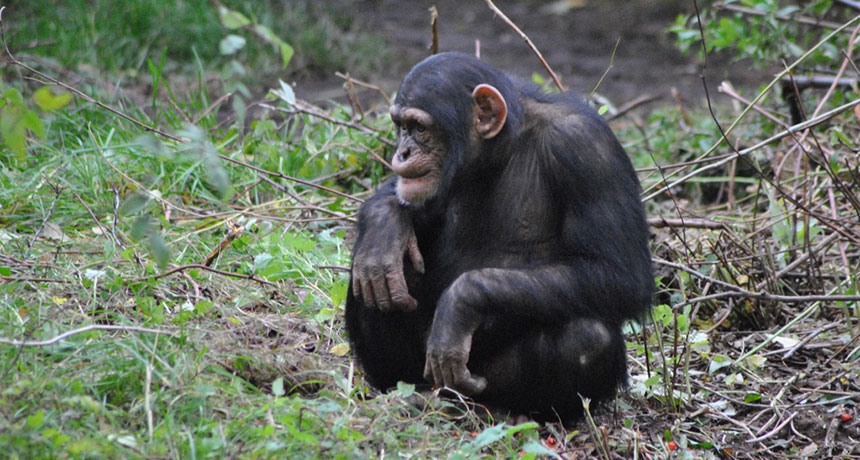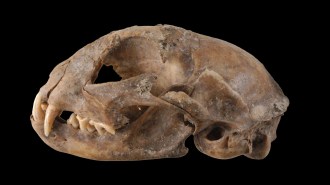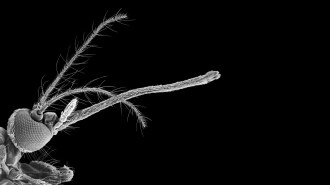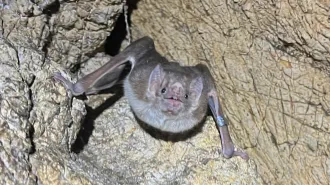Chimps look at behinds the way we look at faces

What is this chimp looking at? Chimpanzees look at each other’s rears in the same way that humans look at each other’s faces, a new study finds.
heatherlynneburrows/Flickr (CC-BY-NC 2.0)
- More than 2 years ago
Humans are really good at picking out faces. Our brains are so good at this that we even see faces in places they don’t exist — like Jesus on toast. Flip a face upside down, though, and the brain needs an extra moment to determine that, yes, that’s a face.
This is known as the inversion effect. And a new study finds that we’re not the only species to demonstrate it: Chimps do, too. Only they do it with butts. And this says something about human evolution — but we’ll get to that in a bit.
In 2008, Frans de Waal and Jennifer Pokorny of Emory University in Atlanta showed in an Ig Nobel–winning experiment that chimpanzees could recognize each other from their behinds — or at least photographs of them. The chimp rear, it turns out, conveys important information about sex and, in females, ovulation status. Both males and females pay attention to those signals, which are important in mating and competition.
Given the evidence that chimps could use both face and behind for recognition, Mariska Kret of Leiden University in the Netherlands and Masaki Tomonaga of the Primate Research Institute at Kyoto University in Japan wanted to know if, like us, chimpanzees display the inversion effect when it comes to these body parts — and how humans might compare.
They started by gathering a group of more than 100 university students and giving them a matching game. The student would be shown a picture of a human or chimp face, butt or foot. Then they would be shown two pictures of the same body part (from the same species) and have to choose the one that matched the first image. Some of those images were right side up and others were turned upside down. The researchers then repeated the experiment with images in black and white and then repeated both experiments again with a group of four female chimps and one male chimp living at the Primate Research Institute.
Humans displayed the inversion effect for human faces only, while chimps did so for chimp behinds and, perhaps, faces (though the evidence isn’t a strong for that), Kret and Tomonaga report November 30 in PLOS ONE.
Article continues below video
In the experiment, chimpanzees had to pick the face, butt or foot that that they had seen earlier. Leiden University and Primate Research Institute/Kyoto Univ. |
Perhaps this shouldn’t be all that surprising, though. The chimpanzee rear conveys a lot of information to other chimps. For humans, our rears not only don’t show the same changes during the menstrual cycle, but we now cover them up nearly all of the time.
“Over human evolution, the face became more and more important for communication,” notes Kret. And over that same time, our faces have become much more like, well, butts: Kret notes that, like the chimp behind, the human face is symmetrical, stands out from the rest of the body, is highlighted with red color and can be attractive, gives information about fitness and is used for identity.
In other words, “buttface” may not be an insult but the truth.
Why did humans’ focus evolve from rears to faces? It’s not that humans started wearing clothes. It’s probably that we started walking upright and looking up instead. Most of the time, anyway.







